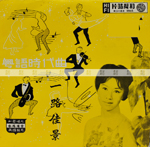In the time when Wong Jum-sum grew up, Cantonese pop music was but one of many kinds of music broadcast on radio. In a society where over 80% of the population spoke Cantonese, that came as a major surprise. Wong has a simple explanation for this. Cantonese pop grew out of traditional Cantonese music, but it could not build on the popularity of the latter in the face of severe competition. Compared to Western or Mandarin pop, it lagged behind in the areas of composition, lyrics, singing, accompaniment, recording, distribution, and marketing. Its competitors had a head start in talents, organization, and technology that took Cantonese pop more than a decade to come close.
Not everyone agrees with Wong’s diagnosis. Other scholars argue Canto pop, even in such early days, had a unique vibrancy that came from a healthy disregard of the boundaries among different traditions and genres, be they local or foreign. Early Canto pop laid a solid foundation for modern Canto pop, which went on to dominate not only Hong Kong but most Chinese communities around the world.
The story of Cantonese pop awaits careful re-writing.

The modernization of Cantonese traditional music started in the 1920s. Western instrumentation and arrangement slowly seeped into the genre. The popularity of dance halls in the 1940s gave impetus to new forms of Cantonese music, variously called ‘light music’ or ‘spirit music’, which stressed the dance beat and relied on the drums for lead.
Here one can hear an early landmark Cantonese pop tune, Tender Love, which showed unmistakably the similarities as well as disjuncture between the old and new.

撰曲:朱頂鶴
主唱:冼劍麗
「第一段」(一枝梅)
晴天開 朗月正起東方
推窗望銀漢 心事多添上
嘆織女共牛郎 已遭隔斷在河傍
情心空自向 恨未央 歲歲如常
鵲架橋樑正遂了希望
我心自暗想 想到受此冷落情況
思君隔別遠方 甚覺不安
(慢放)
撩動起 我情絲千萬丈
愁對雙星 令我滿懷惆悵
蘭閨靜 倚牙床 殘更數盡
未免嗟嘆襟寒 當日與檀郎
好比鶼鰈相依 共把情歌和唱
「第二段」(石榴花)
唱罷同賦詠 心懷放
豈知一旦別離 每思念郎
午夜魂夢 心神往
應憐我苦況 點能夠
(轉二至王下句)
多生兩翼飛去伴住阿郎
(長句)
但見月照紗窗 惹起愁絲萬丈
只為團圓美景也無常
郎你早定歸期 以慰儂心盼望
須知年華易老 恰似逝水茫茫
(無錫景)
願郎舊恩愛莫忘 勿作背情漢
快快歸家兩相歡愛樂再嘗
遂我心裡望 我更要情郎
在我身傍 永不復分
倆雙在繡房 大眾暢懷心花放
























